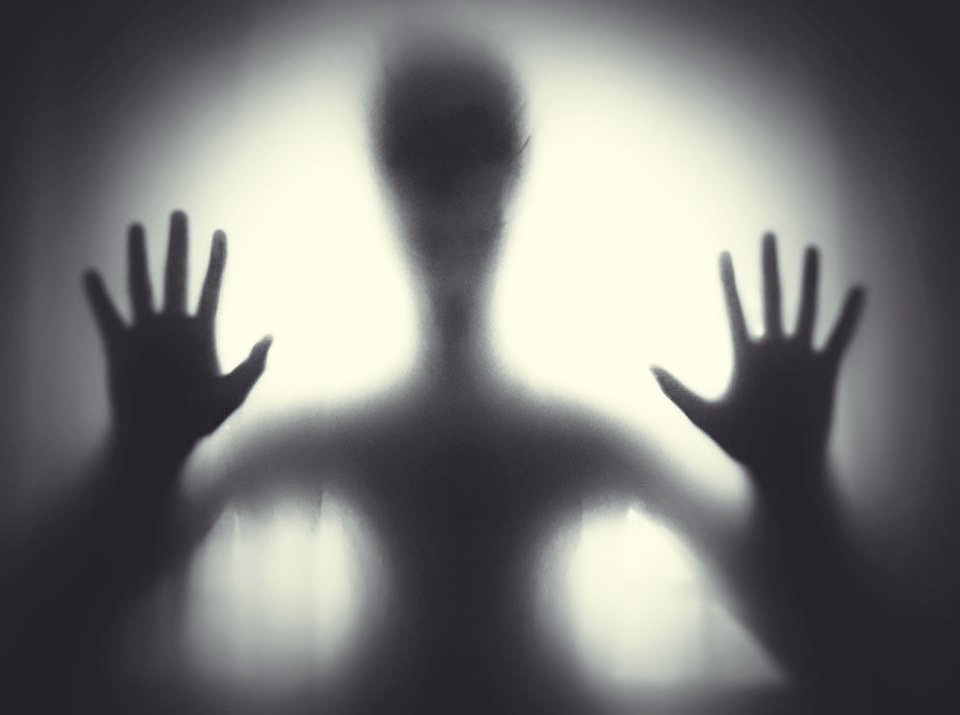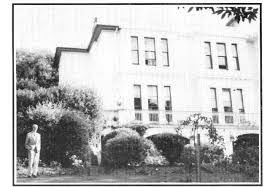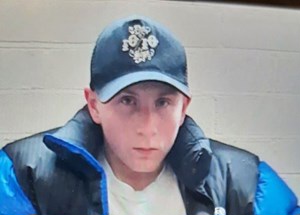During the early twentieth century two reported incidents gave a house in Torquay the reputation of being one of the most haunted in England. Both involved unquiet spirits that were violent, and one featured an exorcism. These reports show how far the British ghost story had moved on from the helpful or mournful apparitions of the nineteenth century to the vengeful poltergeist of the post-Great War period. The Warberry ghost was a violent phantom for a violent time.
Both tales feature prolific authors with deep religious convictions – the first a convinced Spiritualist and Theosophist, and the second an ardent Christian.
Our first dispatch from the frontline of supernatural studies comes from Torquay resident Violet Tweedale (1862-1936), an author, poet, and committed Spiritualist. Born in Edinburgh, Violet moved to London in 1889 where she wrote her first novel, ‘And They Too’, and became involved in humanitarian ‘rescue work’ in the East End. While in London, she moved in the best social circles and was a friend of the poet Robert Browning.
Claiming to be psychic from a young age, she became involved in Spiritualism and Theosophy, and was a close associate of the occultist Helena Blavatsky. Violet was also a member of the magical Hermetic Order of the Golden Dawn, one of the largest single influences on twentieth century occultism.
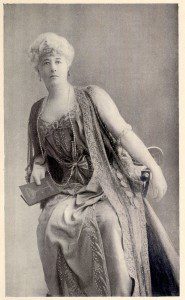
Violet (pictured above) was a prolific writer and wrote over 30 books on spiritual subjects, such as ‘The Cosmic Christ’ (1930), and on her own personal psychic experiences. By happy chance, she came to reside in the Warberrries – very close to Torquay’s Amityville which allowed her to explore, and possibly exploit, the mythology attached to the long-derelict building.
It’s from Violet’s memoirs ‘Ghosts I Have Seen’ (1920) that we take a lengthy and colourful description of her involvement with Castel-a-Mare (pictured below), the Torquay house which had reputedly been haunted for 50 years before Violet decided to investigate.
By then the crumbling Victorian villa had acquired a bit of a reputation. Ghosts were supposed to haunt not just the house but the stables where frightened horses had to be forced in backwards. None of the doors in the house would stay locked, dogs being taken for walks would howl as they passed, and their owners had to walk on the other side of the road. No tenants would stay very long, mediums failed to exorcise the spirits, and eventually the building fell into disrepair. Indeed, a number of explorations of the house had already taken place to look into a range of phenomena. These included piercing screams, continuous steps running along corridors and up and down stairs, and the constant locking of doors by unseen hands.
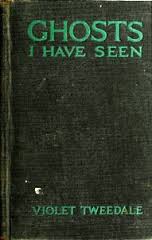
Violet’s initial investigations found that her “twig and straw arrangements”, left overnight to indicate human interlopers, remained undisturbed. However, “not a single door was shut, all were thrown defiantly wide”. Resolving to see who was opening these locked doors, her team of intrepid investigators stayed in the house. She recalled, “Suddenly a click made us both look up. The handle of the door… was turning, and the door quietly opened wide enough to admit the passing of a human being. It was a bright sunny day, and one could see the brass knob turning round quite distinctly. We saw no form of any sort, and the door remained half open.”
This needed further investigation, and in 1917 Violet joined an eight strong team which included a medium, a builder and a soldier on leave who also seems to have been an amateur exorcist in his spare time.
Soon, as is to be expected, the medium fell into a trance. She then, “Sprang to her feet with surprising agility, pouring out a volume of violent language. Her voice had taken on the deep growling tones of an infuriated man, who advanced menacingly… In a harsh, threatening voice he demanded to know what right we had to intrude on his privacy.
“The entity that controlled her possessed superhuman strength. His voice was like the bellow of a bull, as he told us to be gone, or he would throw us out himself, and his language was shocking… suddenly the control rushed full tilt at the soldier, who had stood his ground, and attacking him with a tigerish fury drew blood at once. The big builder and I rushed forward to his aid. The rest of the party forsook us and fled, pell-mell, out of the house and into the garden.
“This frail little creature threw us off like feathers, and drove us foot by foot before her… she was too much for us. Then suddenly, without warning, the entity seemed to evacuate the body he had controlled, and the medium went down with a crash and lay at our feet, just a little crumpled dishevelled heap. After about ten minutes, she gradually regained her consciousness, and seemingly none the worse for her experiences she sat up and asked what had happened.”
Another investigation was then arranged, and the male entity again took control of the medium: “The same violence, the same attacks began once more. The soldier and the stalwart builder warded off the attacks, Then the soldier, who seemed to have considerable experience in such matters, tried a system of exorcising, sternly bidding the malignant entity depart. There ensued a very curious spiritual conflict between the exorcist and the entity, in which sometimes it seemed as if one, then the other, was about to triumph… We drove him back against the wall at the far end of the room. Finally the exorcist triumphed, and the medium collapsed on the floor, as the strength of the control left her.
“She raised her head, and still crouching on the floor with closed eyes she began to cry bitterly. Wailing, and moaning, and uttering inarticulate words. ‘Another entity has got hold of her,’ announced the soldier. ‘Poor master! On the bed. Help him! Help him!’ she moaned, and pointed to one side of the room… By clenching her hands on her throat, the medium indicated death by strangulation…
“The medium had turned at bay, and began a frantic encounter with some entity unseen by us. Wildly she wrestled and fought, as if for her life, whilst she emitted piercing shrieks for ‘help’ and gasped out, ‘Terrible doctor–will kill me–he’s killed master–help! Help!’ Gradually she ceased to fight. The soldier was exorcising with all his force, and was gaining power; finally he triumphed, inasmuch as he banished the ‘terrible doctor’.”
The investigators later questioned the medium. She told them that a physician “of foreign origin” had strangled the master of the house and had then gone on to murder a maidservant. There’s a good range of Victorian and Edwardian stereotypes in many of these stories.
Just to put things in a bit more of a context, Violet wasn’t a stranger to supernatural manifestations. She once described being terrified by, “a large headed, vicious elemental gnome” who turned up in her hotel room in Switzerland, and she had the very good fortune to spot a pixie sitting on a leaf in the garden of Lupton House near Brixham.
Spiritualists such as Violet wanted to believe. They were so convinced of the reality of the supernatural that they presented ‘proof’ in the form of spirit photography. The photograph below – given by Violet as evidence of contact with the dead – shows the Reverend Charles being watched over by a, rather large, deceased friend. The spirit photography craze, however, was invented by medium William Hope who took a photograph of a client and then used glass plates and double exposure. Though doubts were raised about his lucrative spirit photography in 1908, it took until 1922 for the Society for Psychical Research to demonstrate that Hope was fraudulent during tests conducted at the British College of Psychic Science. The researchers wrote, “William Hope has been found guilty of deliberately substituting his own plates for those of a sitter… It implies that the medium brings to the sitting a duplicate slide and faked plates for fraudulent purposes.”
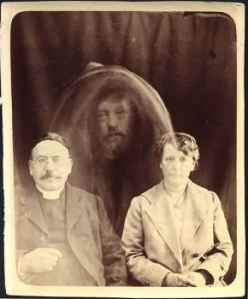
Our second narrative comes from the writer Beverley Nichols. Beverley (1898-1983) wrote on a wide range of topics including politics and travel. He produced six novels, five detective mysteries, four children’s stories, six autobiographies and six plays. He’s probably best remembered for his gardening books. Possibly significantly he also wrote books arguing for his belief in Christianity.
In 1920 Beverley, his brother and a friend, Lord Saint Audries, visited Castel-a-Mare. They were drawn to the house having heard of its haunted history and being fully aware of the stories of footsteps and terrifying shrieking. Sceptics, on the other hand, have since suggested that the presence of noisy pet peacocks in a neighbouring house may have contributed to the origins of the stories of unnatural screams.
Searching the derelict house with only a candle to light their way the three ghost-hunters went from room to room, eventually climbing a narrow staircase to the top floor. Beverley said that he then realised that his mind and body seemed to have slowed down and that even his thinking had become confused. He managed to crawl to a window before fainting.
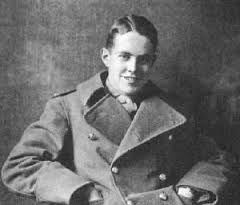
After Beverley had recovered, Lord Saint Audries decided to look around alone, but agreed he would whistle every minute to let the others know that he was safe. For 20 minutes, he searched the house and was heard to whistle. According to their testimony, suddenly Nichols and his brother felt something leave the house, silently passing them. They then heard a terrified shout from Audries and the noise of a violent struggle. A dishevelled Audries then ran into the garden and collapsed beside them.
When Audries recovered he said that his attention had been drawn to the room where Nichols had fainted. He saw a greyish light in the darkness coming from the room. When he turned to descend the stairs, something “black, silent and man-shaped rushed from the room and knocked him to the floor. An overwhelming sense of evil overcame him and he struggled to keep his sanity as he ran from the house.”
According to accounts, the three later discovered that a mad doctor had killed his wife and their maid in around 1870. This is all a bit unclear as another version of the story is that a guest or patient was visiting the deranged doctor and was murdered. Of course, the small room where Nichols and Audries had their experiences was the site of the murders.
Unfortunately we don’t know if Beverley and his team had prior knowledge of the experiences of Violet’s earlier expeditions and were influenced by them. Were they acting out the script given to them by the respected medium?
Though some hoped that never again would a house be built on the site of Castel-a-Mare, after it was demolished/renovated in 1920, another has been. Not unexpectedly Castel-a-Mare then acquired another layer of myth. The local press reported that builders were asked if anything strange had happened while they worked there. They responded that though they had securely locked up overnight, their ladders and paint had been found to be knocked over when they opened up in the morning. One added that he didn’t like the feeling and atmosphere of the new bathroom at the top of the stairs… Whether the Press were asking leading questions, or the builders just playing along, we’ll probably never know.
So that’s the story of Torquay’s Amityville. Like its New York counterpart, myth and storytelling have contributed to its notoriety and fame amongst the ghost hunting fraternity. Nonetheless, if there are any aspiring members of Mystery Incorporated reading this, the site of Castel-a-Mare lies between Norfolk Lodge and Grendon on Middle Warberry Road.


